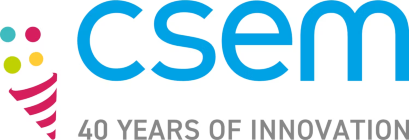
CSEM make miniature cameras for space missions, such as the European Rosetta mission that landed on a comet in 2014. Image shows illustration of comet in space.Credit: Matthias Kulka/ Getty Images
The Swiss government set up CSEM 40 years ago. Why?
Swiss scientists invented the quartz watch in the 1960s, but they didn’t commercialize it. When Japanese companies took the idea to market, it killed our traditional watchmakers and the Swiss economy crashed. More than 1,000 companies went bankrupt in Switzerland and some 70,000 jobs disappeared. It was a huge crisis, and our politicians ordered an inquiry to make sure the country didn’t make the same mistake again. They realized they needed to build a bridge between fundamental research and industrialization, and that bridge was CSEM.
How does CSEM bridge research and industrialization?
The only mission of CSEM is to develop breakthrough technologies and transfer them to industry. We don’t do fundamental research. In the 1980s, we focused 100% on watches, but since then we have grown and diversified along with the Swiss and international industry. We now have more than 600 employees, six sites in Switzerland and customers all over the world.
What kinds of technology do you work with?

Bahaa Roustom, vice president of marketing and business development at CSEM.Credit: CSEM
Our speciality has always been precision microelectronics, and to find ways to power and miniaturize them. We work across all the markets, from photovoltaics to sustainability, and from batteries and sensing, into the life sciences and digital health. We make miniature cameras for space missions, including those sent to observe the Moon, to record wild weather on Earth, and as part of the European Rosetta mission that landed on a comet in 2014. And what’s nice is that we’re now working in watchmaking again, which is a sector that’s growing because of the demand for connected devices. These watches use our photovoltaics, they use our energy management systems and our sensor and digital health technology. Because a watch is not really a watch anymore, it’s integrating everything into a small, smart device. And that’s something we excel at, at CSEM and in Switzerland in general.
You must work closely with the companies?
Yes, very. In fact, we have a very unusual structure because some of our client companies are also our biggest shareholders. Together, the Swiss government and our local region and city own about 27% of CSEM shares. The rest are owned by private firms. We have energy companies, medical device companies and watch companies. CSEM itself is also a private company, but it’s an exception as it’s not-for-profit. The companies that are our shareholders don’t get any financial dividend. The only return they really get is early access to the public information that we have. This close relationship we have with industry is very important because it helps us to anticipate their needs. They trust us. We have discussions with hundreds of companies a year. They come to us and share their technology roadmaps and we talk about how to achieve their goals. In that way we are in the service of industry.
How do you use all this information?

From one side we know what industry needs, but we are also really well connected to the academic world. And that’s how we act as the bridge between the market needs and research trends. Building on this, using public money from the Swiss authorities, we develop those breakthrough technologies today that our industrial clients will use in four or five years to make a product to take to market. So, we have to look ahead.
What do you see as the next big technology?
For me, it is everything related to photonics and quantum sensing, together with the battery and what we call the micro mechanical system. People talk a lot about digitalization, but we shouldn’t forget that at its heart, you have to sense something. That means you must have a sensor — and sensing technology is something that CSEM is very well known for. This is where I see a lot of exciting stuff coming, specifically at the interface between quantum photonics, energy systems and sensors.
And where are the biggest opportunities?
These are the applications in the field of personalized medicine. We’re working on diagnostics and wearable sensors, and on ways to make sure that the right treatment goes to the right person. And we’re developing organoids and organs on chips, which are a kind of three-dimensional cell culture. We’re building non-invasive techniques that go all the way from fetal monitoring to checking whether older people are walking comfortably or not. We think these technologies are going to be big in the future.


